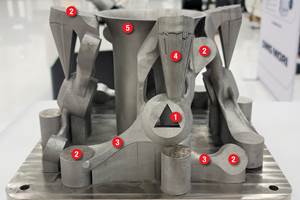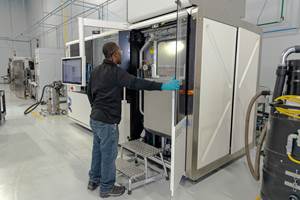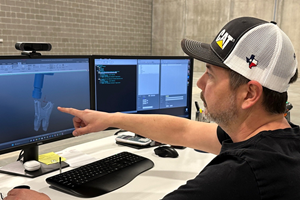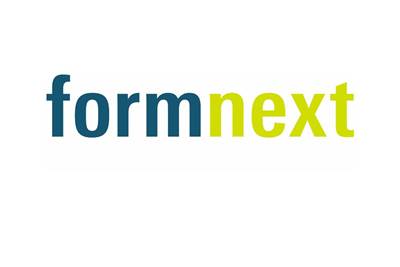Share





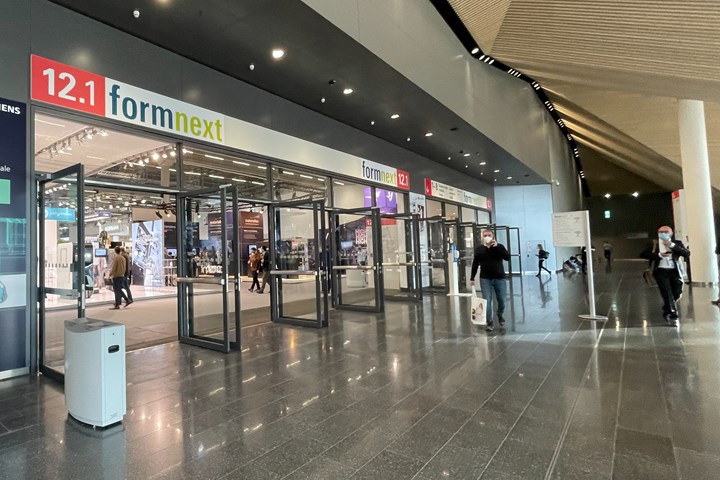 The largest additive manufacturing trade show returned with an in-person format in Frankfurt, Germany. News announced at the show included Formnext USA, a North American version of this event coming in 2025. More on this news plus trends from this year’s event below.
The largest additive manufacturing trade show returned with an in-person format in Frankfurt, Germany. News announced at the show included Formnext USA, a North American version of this event coming in 2025. More on this news plus trends from this year’s event below. Held annually in Frankfurt, Germany, Formnext is the largest trade show in the world dedicated to additive manufacturing (AM). It is large in the sense of its size — in 2021 covering 30,000 square meters and drawing nearly 18,000 visitors. But it is also large in the sense that it covers a wide spectrum of the things that go into “additive manufacturing.” AM is associated with and includes 3D printing, but there are steps and pieces of equipment on either side of the 3D printer necessary to support these machines in a true production manufacturing workflow. Part of what is distinctive about Formnext is how thoroughly the exhibits cover the entire additive manufacturing process chain, as well as its focus on industrial uses for this technology.
While this year’s show was somewhat diminished in size from the last in-person event in 2019, there was nevertheless much to learn and report on. Peter Zelinski (editor-in-chief of both Modern Machine Shop and Additive Manufacturing) and I collaborated on covering the technology and trends in evidence at Formnext 2021. Read on for a recap of what we saw, or listen to our conversation on the AM Radio podcast embedded below.
- The pandemic both hindered and helped additive manufacturing. While some exhibitors experienced setbacks in business as a result of covid-19, many more said it has been a boost. For some companies a slowdown in travel and sales provided the opportunity to improve upon and advance their equipment. For others, publicity around 3D printing for emergency needs has helped to drive interest in this technology as a means of shoring up challenged supply chains.
- Additive is advancing as a digital manufacturing technology. While advances in hardware are more easily displayed in a trade show booth, many exhibitors were also showcasing software advances and developments meant to make AM more reliable, transparent and traceable. Software also supports the design possibilities AM can execute, and examples of how design is advancing were in evidence across the show.
- Postprocessing is increasingly digitized and automated. Almost any 3D printed part will require some form of cleaning or finishing before it is complete, but historically much of this postprocessing has been done through manual methods. At this year’s Formnext companies providing automated solutions for cleaning, depowdering, support removal and more described the need to bring these steps into the digital thread alongside the design and 3D printing steps.
- Changes to customer choice are coming. Numerous examples of consumer products displayed at the show underscored how thoroughly 3D printing could change the types and varieties of products available to consumers. In some cases these examples offer greater customization and on-demand production for unique customers, but in others, the standard product itself has been dramatically improved by virtue of AM. While 3D printed consumer items are expensive today, they will become increasingly accessible to the average person.
- Polymer composites are becoming a focus. Where in the past, the ability to print with fiber-reinforced polymer has been largely an “extra” attached to existing polymer 3D printers, we are now seeing dedicated platforms emerge to apply this technique. 3D printed polymer composites offer a lightweight, strong option that could be a replacement for parts today machined from aluminum or steel.
- Options for multimaterial 3D printing are increasing. Exhibitors showed off parts with material combinations such as wear-resistant Inconel added to a stainless steel part, and industrial components that feature both ceramic and metallic elements. Similar to composites’ ability to challenge whether a part should be polymer or metal, multimaterial capabilities challenge the assumption that any given component should be made of just one material. As 3D printers capable of these strategies become more accessible, designs that can make use of multiple materials at once will become more common.
- 3D printers are getting bigger. Machine suppliers who previously provided desktop 3D printers or other small systems are increasingly offering larger printers. The reasons for this are two-fold: Larger travels accommodate larger parts, but also large batch sizes for processes that support nesting. Larger printers translate to greater productivity—important as additive production scales.
- Higher-temperature polymer printers increase material options. Many polymer 3D printer manufacturers touted support for high-temperature 3D printing on their machines. Higher temperatures open the door to a wider range of materials, including high-performance polymers such as PEEK and Ultem.
- AM equipment suppliers are increasingly producers. Where in other industries suppliers might stick to providing equipment and service, the intricacies of additive manufacturing have lead both materials companies and machine makers to also get involved in producing parts. These companies are finding that exposure to the real challenges of production can help advance their product offerings more quickly, with a better pulse on what industrial users need. We saw examples of 3D printed production parts made by suppliers (or special branches and ventures of supplier businesses) across the show.
- Formnext is coming to North America. At a press conference during the show, Formnext organizer Mesago Messe Frankfurt announced the forthcoming launch of Formnext USA. Together with AMT – The Association For Manufacturing Technology and Gardner Business Media (publisher of Modern Machine Shop and Additive Manufacturing), Mesago unveiled plans to bring a U.S. version of Formnext to Chicago in 2025. In the interim, Formnext will be represented at IMTS, the International Manufacturing Technology Show, and the Additive Manufacturing Conference and Expo. This move reflects the growing use of 3D printing technology for discrete part production and the appetite for an event serving the industrial additive market in North America.
Related Content
Designing a 3D Printed Part with Machining in Mind
Designing extra stock and mounting features into a 3D printed part can aid in machining processes downstream.
Read MoreJTEKT Technology Days Showcases Synergies
The event took place following the company’s completion of its new showroom and decision to merge several of its brands under the JTEKT name.
Read MoreThe Benefits of Vertically Integrating Metal 3D Printing and Machining
Having 3D printing and machining within one organization enables Addman’s engineers to collaborate and consolidate so it can quickly make successful metal 3D printed parts.
Read MoreDigital Transparency in Machining Key to Multi-Site Additive Manufacturing
Cumberland Additive’s CNC programmer in Pennsylvania spends most of his time writing programs for machine tools in Texas.
Read MoreRead Next
Leading AM Trade and Media Organizations Unite to Launch Formnext USA Chicago in Spring 2025
Mesago Messe Frankfurt the organizers of Formnext and Messe Frankfurt USA announce a strategic partnership with the Association For Manufacturing Technology and Gardner Business Media. The new show creates one event in the United States dedicated to all aspects of industrial additive manufacturing.
Read MorePeople, Production and 3D Printing: Themes from the Additive Manufacturing Conference + Expo
The editors of Additive Manufacturing Media came away from the event with 5 major takeaways regarding the adoption, advance and commercialization of AM. Read or listen to these observations.
Read MoreSetting Up the Building Blocks for a Digital Factory
Woodward Inc. spent over a year developing an API to connect machines to its digital factory. Caron Engineering’s MiConnect has cut most of this process while also granting the shop greater access to machine information.
Read More

.jpg;width=70;height=70;mode=crop)















.jpg;maxWidth=300;quality=90)



